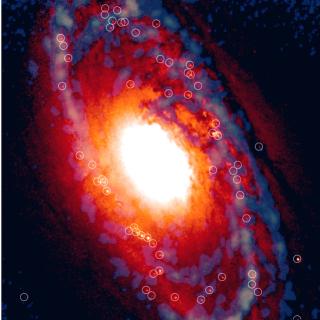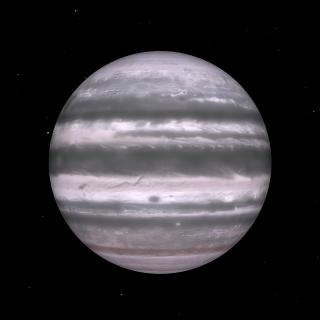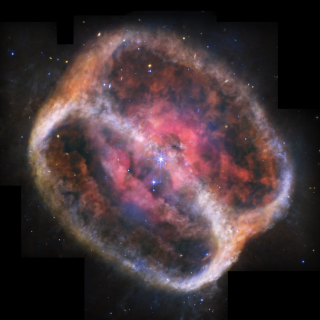It may interest you
-
 An international study led by Almudena Prieto, a researcher at the Instituto de Astrofísica de Canarias (IAC) has found places where new stars are forming, as faint star clusters, around the centre of an evolved galaxy. This is the first time that young populations of stars have been picked out and dated in this type of galaxies dominated by very old stars, which can be called “rejuvenated old galaxies”. The research has combined observations from various telescopes, both ground based and space based, and has used innovative techniques of data analysis. The results are published in theAdvertised on
An international study led by Almudena Prieto, a researcher at the Instituto de Astrofísica de Canarias (IAC) has found places where new stars are forming, as faint star clusters, around the centre of an evolved galaxy. This is the first time that young populations of stars have been picked out and dated in this type of galaxies dominated by very old stars, which can be called “rejuvenated old galaxies”. The research has combined observations from various telescopes, both ground based and space based, and has used innovative techniques of data analysis. The results are published in theAdvertised on -
 The distribution of planets in the over five thousand distant solar systems discovered to date forms a complex puzzle. There is a region in the planetary orbit graph, known as the " Neptunian desert", where very few Neptune-like planets with orbits of between two and four days period around their star have been recorded to date. Now, a scientific team led by the Instituto de Astrofísica de Canarias (IAC) and the Instituto de Astrofísica de Andalucía-Consejo Superior de Investigaciones Científicas (IAA-CSIC) , using a novel technique, new planets around red dwarf stars located precisely inAdvertised on
The distribution of planets in the over five thousand distant solar systems discovered to date forms a complex puzzle. There is a region in the planetary orbit graph, known as the " Neptunian desert", where very few Neptune-like planets with orbits of between two and four days period around their star have been recorded to date. Now, a scientific team led by the Instituto de Astrofísica de Canarias (IAC) and the Instituto de Astrofísica de Andalucía-Consejo Superior de Investigaciones Científicas (IAA-CSIC) , using a novel technique, new planets around red dwarf stars located precisely inAdvertised on -
 An international team, including a researcher from the Instituto de Astrofísica de Canarias (IAC), has obtained an incredible image of the planetary nebula NGC 1514 using the James Webb Space Telescope (JWST), revealing the nebula's spectacular dusty rings in unprecedented detail. NGC 1514 was one of the first nebulae to be studied by astronomer William Herschel, who noted that when viewed through his telescope (the biggest in the World at the time) the nebula looked like a fuzzy cloud somewhat similar in appearance to one of his other discoveries: the planet Neptune. The new images acquiredAdvertised on
An international team, including a researcher from the Instituto de Astrofísica de Canarias (IAC), has obtained an incredible image of the planetary nebula NGC 1514 using the James Webb Space Telescope (JWST), revealing the nebula's spectacular dusty rings in unprecedented detail. NGC 1514 was one of the first nebulae to be studied by astronomer William Herschel, who noted that when viewed through his telescope (the biggest in the World at the time) the nebula looked like a fuzzy cloud somewhat similar in appearance to one of his other discoveries: the planet Neptune. The new images acquiredAdvertised on